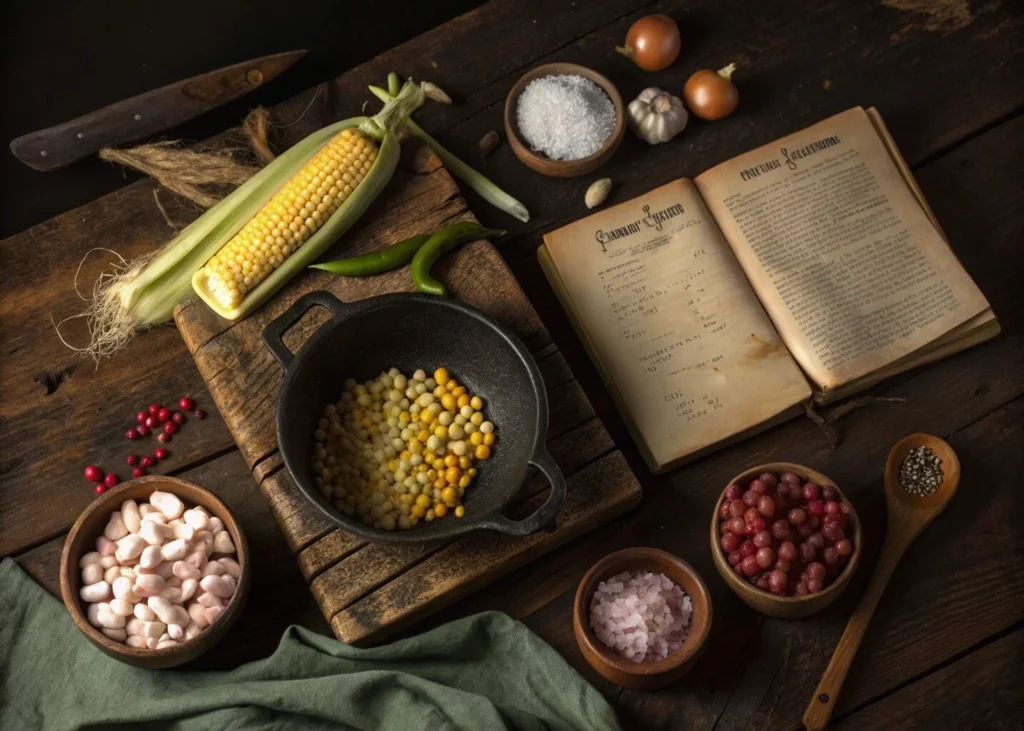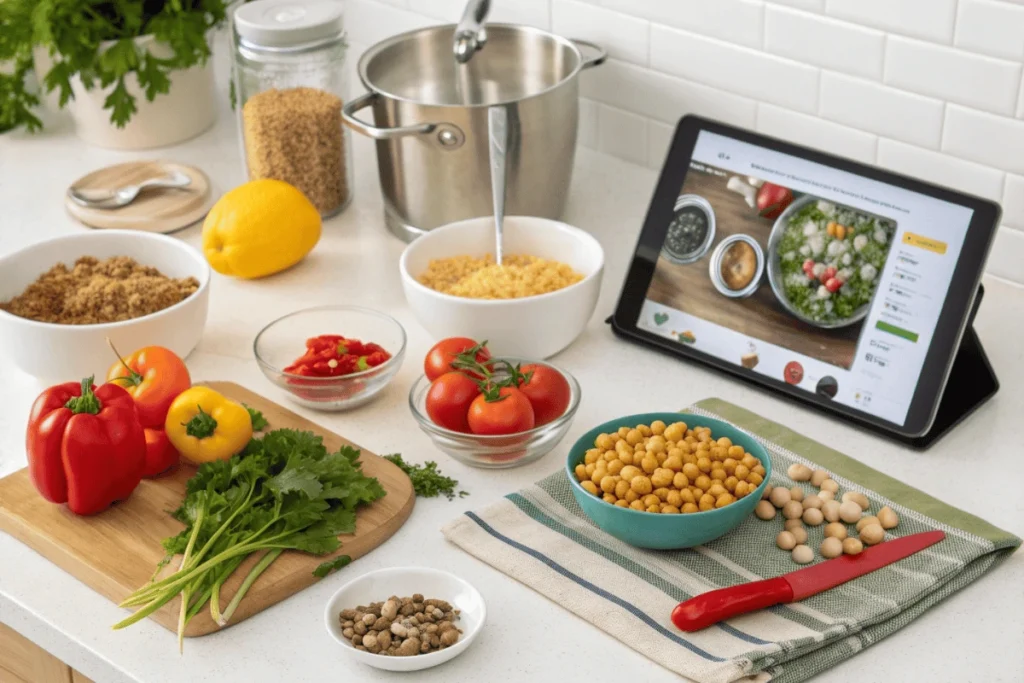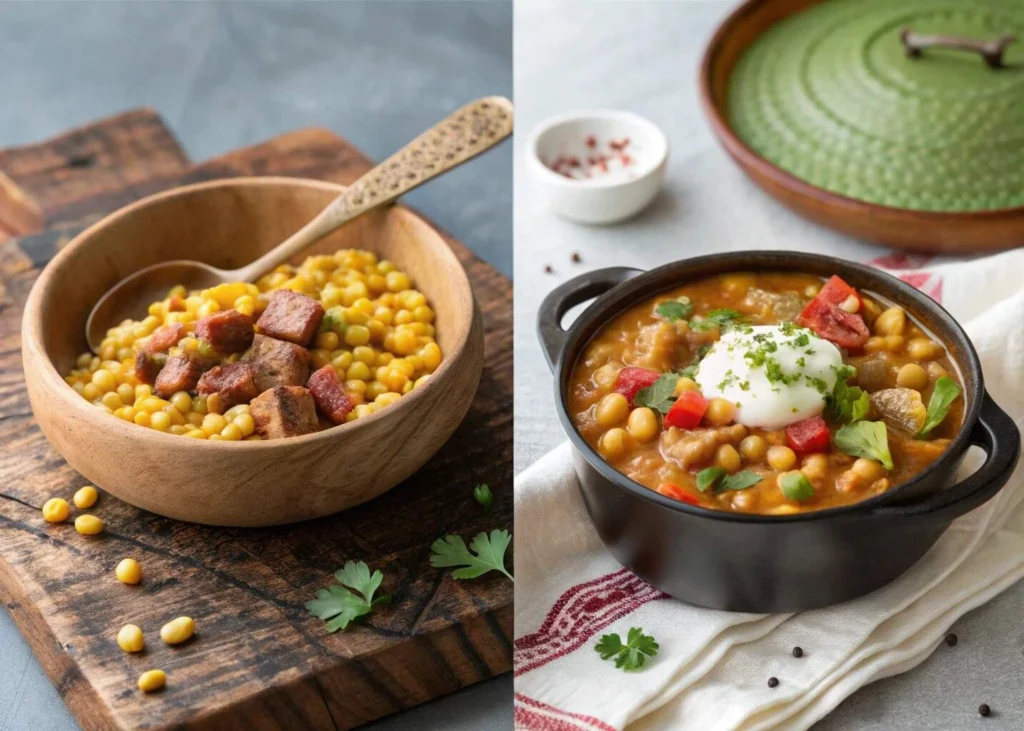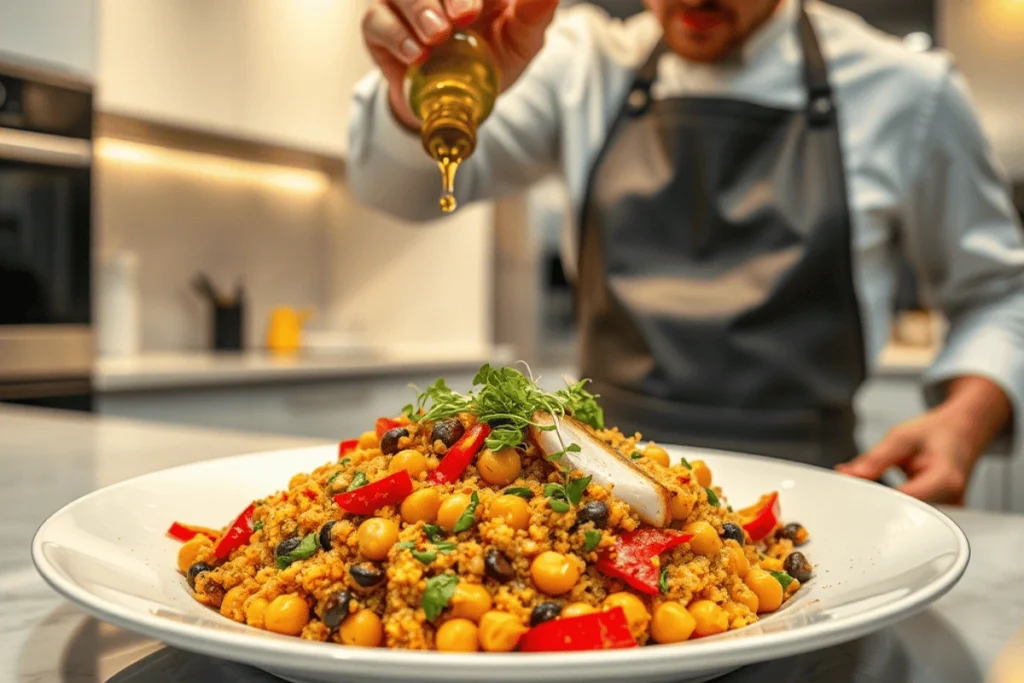A Taste of History – My Love for Cooking and Succotash
Ever since I was a child, I loved stepping into the kitchen with my mother. The warmth of the stove, the clinking of pots and pans, and the rich aroma of home-cooked meals, especially Succotash, always made me feel safe and happy. Cooking was more than just preparing food—it was a way to connect with traditions, share stories, and create something meaningful.
When I first discovered this dish, I was fascinated This dish, with its Native American roots dating back to the 1700s, has survived centuries of change, adapting to new ingredients and cooking styles. From a simple survival meal in the colonial era to a Southern comfort dish in the 1800s and now a modern, health-conscious recipe in 2025, It has remained a beloved classic
In this article, we’ll explore:
- The original 1700s Succotash recipe – how it all started.
- The evolution of Succotash in the 1800s – with influences from Southern cuisine.
- What Succotash looks like in 2025 – a modern twist on this ancient dish.
Let’s take a delicious journey through time!
What Is Succotash? A Dish Steeped in Tradition
The Origins of Succotash: A Native American Legacy
The word “Succotash” comes from the Narragansett Native American word “msíckquatash,” which means boiled corn kernels.For centuries, Native American communities relied on corn and beans, as they provided a nutritional balance crucial for survival.
- Corn = Carbohydrates for energy.
- Beans = Protein for strength.
- Together, they form a complete protein, offering essential amino acids.
This dish was not just a meal—it was a symbol of resilience and wisdom, passed down through generations.
How Succotash Became a Colonial Favorite in the 1700s
When European settlers arrived, they quickly embraced this hearty dish because:
- It was easy to make with available ingredients.
- It was nutritious, helping them survive harsh winters.
- It required minimal cooking equipment, making it ideal for early American kitchens.
By the mid-1700s, it became a staple dish in many colonial homes, often served as a side dish or a warm stew on cold nights.

The Traditional 1700s Succotash Recipe
Ingredients:
- 2 cups dried corn (or 3 cups fresh)
- 1 ½ cups dried lima beans
- 4-5 cups water
- ½ teaspoon salt
- 1 tablespoon animal fat or butter (optional)
Instructions:
- Soak the dried corn and beans overnight in separate bowls.
- Boil the beans in a large pot with 4 cups of water for 45-60 minutes.
- Add the corn and simmer for another 30 minutes (if dried) or 15 minutes (if fresh).
- Season with salt and add a bit of animal fat or butter for extra richness.
- Serve hot and enjoy a taste of history!
“The beauty of Succotash is in its simplicity—just a few ingredients, yet so much history in every bite.”
The Evolution of Succotash in the 1800s: Southern Influence and Richer Flavors
By the 1800s, American agriculture expanded, and Succotash evolved with the introduction of new ingredients. The Southern cooking style played a major role in this transformation.
Changes in the 1800s Succotash:
- Meat was added – Pork fat or salt pork became popular.
- More seasoning – Onion, garlic, and black pepper were introduced.
- New legumes – Some versions replaced lima beans with chickpeas or field peas.
“Cooking is the art of making the most of what’s available to nourish those we love.”
1800s Succotash Recipe
Ingredients:
- 2 cups corn
- 1 ½ cups lima beans
- 100g salt pork or bacon
- 1 onion (chopped)
- 1 garlic clove (minced)
- Salt and black pepper
- 4 cups water
Instructions:
- Cook the salt pork in a pot to release its fat.
- Add the chopped onion and garlic; sauté until golden.
- Add the beans and water, simmer for 40 minutes.
- Stir in the corn, cook for another 15 minutes.
- Season with salt and pepper, and serve warm!
Taste: Richer and smokier than the 1700s version, thanks to the meat and garlic.

The Succotash of 2025: A Modern Twist on an Ancient Dish
Fast forward to 2025, and it is still alive and well! However, today’s version is healthier, plant-based, and influenced by global flavors.
How Succotash Has Changed in 2025:
- Quinoa or millet replaces corn for added protein.
- Chickpeas or black beans instead of traditional lima beans.
- Coconut milk & curry bring in international flavors.
- Modern cooking methods like air frying and sous vide enhance texture.
“Food traditions evolve, but the joy of eating remains timeless.”
2025 Succotash Recipe
Ingredients:
- 1 cup quinoa (instead of corn)
- 1 ½ cups chickpeas (instead of lima beans)
- 1 tbsp olive oil
- 1 red onion (chopped)
- 1 red bell pepper (diced)
- 1 tsp mild curry powder
- 200ml coconut milk
- Salt, pepper, fresh cilantro
Instructions:
- Sauté onion and bell pepper in olive oil.
- Add chickpeas, curry powder, and quinoa.
- Pour in coconut milk, simmer for 10 minutes.
- Season and garnish with cilantro!
Taste: Creamy, flavorful, with a slight kick from the curry.

Why Succotash Remains Popular Across Centuries
What makes Succotash special is its simplicity, adaptability, and historical significance. Whether it’s 1700s survival food, a Southern dish from the 1800s, or a modern fusion in 2025, it always finds a place on the table.
Why try it today?
- It’s easy to make with minimal ingredients.
- It’s nutritious and balanced.
- It connects you with centuries of culinary history.
Which version of Succotash will you try first? Let me know in the comments!
Ultimately
Succotash is more than just a dish—it’s a piece of American history, a symbol of adaptability and comfort that has stood the test of time. From its humble beginnings as a Native American meal to its evolution in the Southern kitchens of the 1800s, and its modern twist in 2025, Succotash has remained a beloved favorite in American cuisine.
Whether you’re trying the original 1700s recipe, the heartier 1800s version, or the fresh, health-conscious 2025 adaptation, there’s no wrong way to enjoy this versatile dish. And if you’re looking for the perfect dessert to accompany your Succotash, why not try rice cakes? Light, delicious, and full of cultural significance, they make a great finishing touch to your meal.
So, why not give Succotash a try and bring a bit of history into your kitchen today?
FAQs:
1. What is the origin of Succotash?
Contai – Ai Content Automation for Creators The name “Succotash” comes from the Narragansett word “msíckquatash”, meaning boiled corn kernels.
2. Can I make Succotash without meat?
Absolutely, Traditional Succotash was a vegetarian dish, consisting primarily of corn and beans. In the 1800s, meat was added, but modern versions of the dish are often plant-based, using ingredients like chickpeas or quinoa.
3. What can I substitute for lima beans in Succotash?
You can substitute lima beans with chickpeas, black beans, or field peas depending on your preference.
4. Is Succotash a healthy dish?
Yes, is rich in protein, fiber, and vitamins due to the combination of corn and beans. For modern variations, ingredients like quinoa and coconut milk can further boost the nutritional value.
5. How can I make Succotash spicy?
To add a spicy kick, consider using jalapeños, cayenne pepper, or hot sauce in the recipe. Additionally, spices like paprika or curry powder can provide both flavor and heat.

